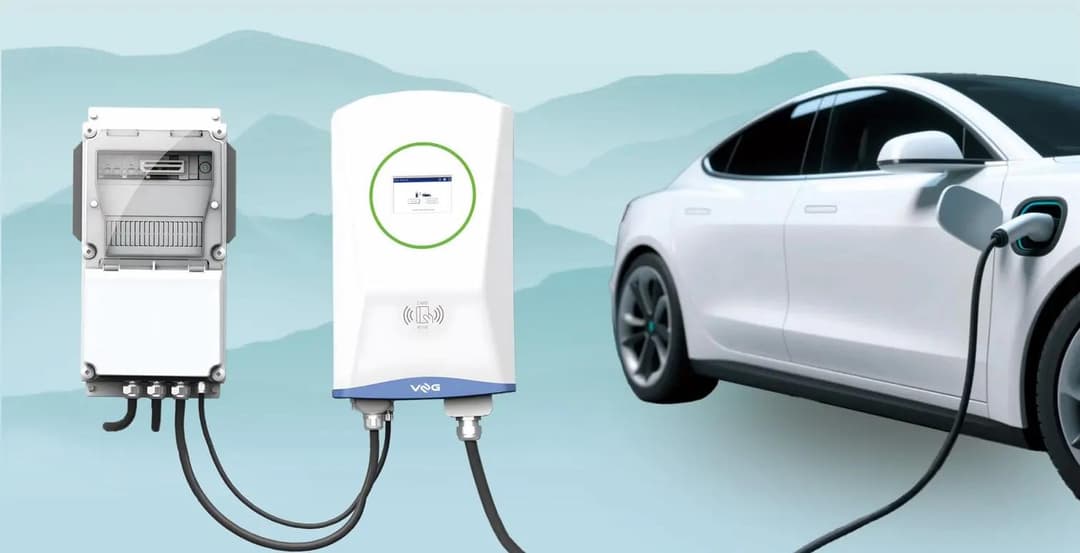RetroVolt Solutions has conducted Australia's first comprehensive public testing of vehicle-to-grid technology, revealing significant compatibility variations between electric vehicle models.
The Melbourne-based company tested five different EV models over a weekend in early August, providing rare public insights into V2G performance across popular brand.
▶️MORE: Bidirectional (V2H and V2G) EV Chargers Guide (2025)

The testing weekend, held at 123 Lonsdale Street from 2-4 August, aimed to validate CCS2-based V2G readiness in Australia using RetroVolt's Infypower 7kW bidirectional system.
Vehicle-to-grid technology allows electric vehicles to function as portable power plants, exporting electricity back to buildings or providing backup power during outages.
System Specifications
Infypower 7kW CCS2 Bidirectional System The wall-mounted DC charger delivers up to 7kW over a 300-750V range, drawing 230V single-phase AC at up to 32A with full ISO 15118/DIN 70121 and OCPP 1.6J compliance.
V2HBOX Off-Grid Interface Provides 100-240V AC output up to 40A through an isolation transformer, featuring seamless on-grid to off-grid transitions via integrated Backup Mode.
Testing Results
The evaluation followed a standardised five-stage sequence including on-grid charging, on-grid discharging, off-grid discharging, grid transition testing, and automated power cycling between 4kW and 5kW loads.
- BYD Atto 3: The first-generation Atto 3 delivered flawless performance across all testing stages. Charging, discharging and grid transitions operated smoothly, with the automation sequence executing without complications.
- BYD Seal Performance: A Tesla Supercharger-modified BYD Seal charged normally but immediately terminated discharge attempts in both grid-connected and off-grid modes. Previous testing with non-modified Seal models had succeeded, suggesting aftermarket charging upgrades may compromise V2G functionality.
- BYD Shark Hybrid PHEV: The plug-in hybrid required ignition activation before charging could commence, but subsequently completed all discharge, transition and automation tests successfully. However, the smaller battery capacity limits practical V2G applications compared to pure electric vehicles.
- Hyundai Kona: The 2024 Kona demonstrated solid fundamental V2G functionality but exhibited protective behaviours during off-grid operation. The vehicle ceased discharging 5-10 seconds after load removal, while initial grid transitions failed until Backup Mode activation.
- Hyundai Ioniq 6: The Ioniq 6 achieved perfect compatibility across all testing phases without any abnormal behaviour or operational complications.
V2G Test Results Comparison
Vehicle Model | Charging Rate | Discharging Rate | V2G Compatible | Notes |
Hyundai Ioniq 5 | TBD | TBD | TBD | To be tested |
Hyundai Ioniq 6 | TBD | TBD | Yes | Perfect compatibility across all testing phases |
BYD Atto 3 | 5.9kW | 5.9kW | Yes | Flawless performance across all testing stages |
BYD Seal | TBD | Failed | No | Tesla Supercharger modification may compromise V2G functionality |
Dashboard Display Variations
Testing revealed inconsistent user interface implementations across manufacturers.
Both Hyundai models displayed discharge rates without negative indicators, creating confusion between charging and discharging states.
The BYD Atto 3 correctly showed negative values during reverse power flow, while the Shark displayed no charging or discharging figures whatsoever.
Power Output Capabilities
Performance testing identified varying maximum power ratings between vehicles.
The Hyundai Kona achieved 6.5kW discharge rates, nearly double its 3.3kW V2L specification, while the BYD Atto 3 peaked at 5.9kW for both charging and discharging operations.
Industry Implications
The testing highlights the current fragmented state of V2G implementation across manufacturers.
While some vehicles like the Ioniq 6 and Atto 3 demonstrate full compatibility, others exhibit specific operational requirements or limitations that could impact consumer adoption.
Particularly concerning is the impact of aftermarket modifications on V2G functionality.
The Tesla Supercharger fix for first generation Australian BYD Seal models appears to cause interference with discharge capability. More testing is required to confirm this.
Second generation BYD Seal models with factory designed Tesla Supercharger compatibility might have no issues with bidirectional charging.
▶️MORE: Australian Roadmap for Bidirectional EV Charging Released
Warranty Concerns Create Adoption Barriers
Despite successful technical demonstrations, most Australian electric vehicle manufacturers have failed to establish clear terms of use for V2G and V2H operations.
This regulatory vacuum places early adopters at significant risk of potentially voiding their battery warranties through unauthorised bidirectional charging use.
Many major Australian EV brands have not issued public statements clarifying whether V2G operations impact warranty coverage for batteries, battery management systems or related components.
Early adopters face the uncomfortable reality of potentially expensive warranty claims being rejected due to undisclosed usage restrictions.
The Path to Commercialisation
The RetroVolt testing represents a significant step towards V2G commercialisation in Australia, demonstrating that CCS2-based bidirectional charging can operate reliably when properly configured.
However, manufacturer warranty clarity remains the critical missing piece for mainstream market acceptance, with consumers hesitant to invest in expensive V2G systems without guaranteed protection.
RetroVolt Solutions expects the Infypower system to receive Australian certification soon, potentially expanding V2G hardware options and improving pricing competition in the emerging market.
About the author

Neerav Bhatt has been a technology journalist and photographer for over 20 years appearing in online, print, radio and TV media. His current focus is on helping Australians switch to electric vehicles as well as making their home fully electric, sustainable and climate resilient. Youtube: www.youtube.com/@NeeravBhatt Web: neeravbhatt.com
Stay up to date with the latest EV news
- Get the latest news and update
- New EV model releases
- Get money savings-deal
